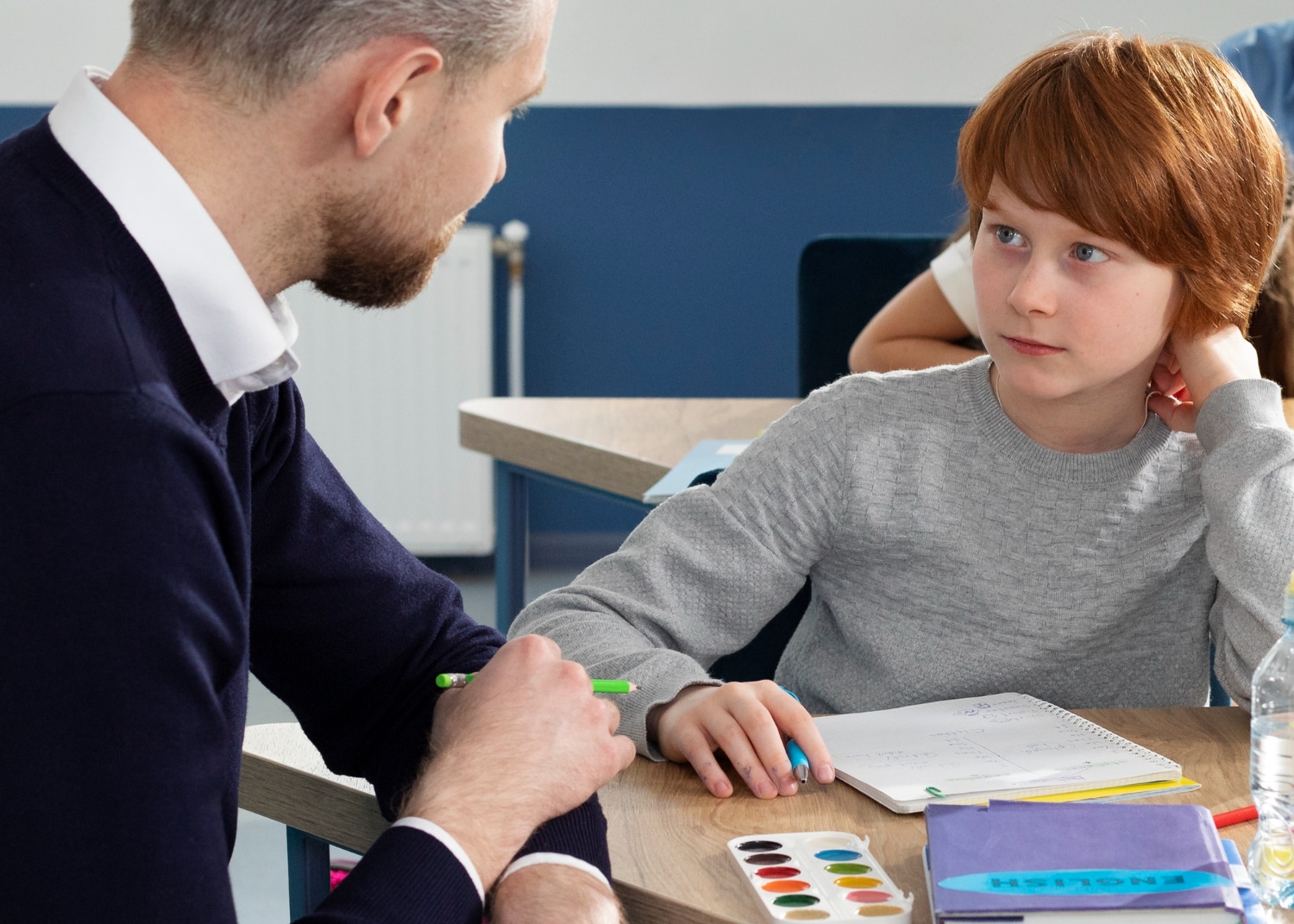Federal review targets special education compliance gaps

Advertisement
Federal review targets special education compliance gaps by assessing schools’ adherence to regulations, encouraging improvements in IEP development, service delivery, and promoting inclusive practices for students with disabilities.
Federal review targets special education compliance gaps that many schools face today. Have you ever wondered how compliance affects educational outcomes for students? In this article, we’ll dive into the critical areas needing attention.
Advertisement
Understanding special education compliance
Understanding special education compliance is crucial for ensuring that all students receive the education they deserve. It involves adhering to federal and state regulations designed to protect the rights of students with disabilities.
Advertisement
Compliance encompasses various areas, and schools must prioritize understanding these regulations to avoid pitfalls. There are several key components that play important roles in special education:
Key Components of Compliance
Special education compliance requires school districts to implement policies and practices that align with legal requirements. Not only does this ensure the rights of students are met, but it also fosters a supportive learning environment.
- Clear identification of students’ needs
- Development of Individualized Education Programs (IEPs)
- Regular assessments and evaluations
- Collaboration with parents and guardians
To grasp special education compliance fully, schools must also be aware of the overarching legislation, such as the Individuals with Disabilities Education Act (IDEA). This law mandates that students with disabilities have access to a free appropriate public education (FAPE) tailored to their individual needs.
Additionally, schools need to engage in constant training and development for staff. This training promotes a knowledgeable approach to compliance, enabling educators to better serve their students. Regular professional development helps teachers stay updated on changes in laws and best practices.
Challenges in Compliance
Despite the established regulations, many schools face challenges when striving for compliance. Here are some common issues:
- Insufficient resources for implementation
- Lack of awareness among staff
- Complicated bureaucratic processes
- Inconsistent communication with families
Through understanding these challenges, schools can devise strategies to overcome barriers, ensuring that they meet compliance requirements. A proactive approach can lead to better educational experiences for students.
In summary, understanding special education compliance is essential for fostering an inclusive environment. With diligent effort and a commitment to improvement, schools can significantly enhance the educational outcomes for students with disabilities.
Key areas of compliance gaps
Identifying the key areas of compliance gaps in special education is essential for developing effective strategies. These gaps can hinder the educational progress of students with disabilities. Understanding where these gaps lie allows schools to address issues before they become significant problems.
Some common areas of compliance gaps include:
Identification and Evaluation
One critical area is the process of identifying and evaluating students who may need special education services. Schools must ensure that all students are assessed fairly and accurately. Unfortunately, some students may be overlooked, leading to a lack of support.
- Inconsistent referral processes
- Delays in evaluations
- Unequal access to assessment tools
- Failure to consider cultural and linguistic differences
By focusing on these elements, schools can improve their identification and evaluation processes.
Individualized Education Programs (IEPs)
The development and implementation of Individualized Education Programs (IEPs) is another critical area where gaps often exist. IEPs outline specific educational goals and the services required to achieve them, but not all schools follow through effectively. Miscommunication between educators and families can lead to significant discrepancies.
- Lack of parent involvement in IEP meetings
- Insufficient staffing to support IEP goals
- Failure to update IEPs regularly
- Poor monitoring of student progress
Addressing these IEP-related gaps ensures that students receive tailored support to meet their unique needs.
Additionally, schools must ensure that they provide appropriate services in the least restrictive environment. This is crucial for fostering positive educational experiences. Many schools face challenges in balancing resource limitations while ensuring compliance with the law.
Training and Resources
Lastly, insufficient training for educators can lead to compliance gaps. Teachers need ongoing professional development to stay informed about regulations and best practices in special education.
- Infrequent training sessions on new laws
- Limited access to resources for staff
- Need for collaborative planning time
- Support for behavioral and emotional coaching
By targeting these areas, schools can narrow compliance gaps and promote better educational outcomes for students with disabilities. Schools that invest in solving these gaps will see improved performance and satisfaction among students and families alike.
Impact of federal reviews on local schools
The impact of federal reviews on local schools is significant, as these evaluations help ensure compliance with special education laws. Federal reviews assess whether schools are meeting the standards set by the government, which directly affects how education is delivered to students with disabilities.
When schools are reviewed, they receive critical feedback that helps them improve their methods. This process can highlight areas needing attention, leading to better practices. Schools often find themselves adjusting their programs to meet federal expectations, which can lead to improved educational outcomes for students.
Enhancements in Educational Programs
Through federal reviews, schools may be prompted to enhance their educational programs. For instance, reviews can uncover gaps in service delivery, prompting districts to provide additional training for educators.
- Development of focused professional development
- Increased collaboration among teachers
- Introduction of new teaching methods
- Strengthened relationships with families
These enhancements can make a substantial difference in student engagement and success. When teachers are better equipped, students receive more personalized support, allowing them to thrive.
Accountability and Transparency
Moreover, federal reviews promote accountability and transparency within local schools. Schools must keep detailed records of special education services and student progress. This transparency helps ensure that families can advocate effectively for their children.
- Requirements for reporting student outcomes
- Regular monitoring of program effectiveness
- Open communication between schools and families
- Use of data to inform decision making
As a result, families become more involved in their children’s education, which benefits students significantly. When parents are informed and engaged, they can work collaboratively with schools to support their child’s needs.
Another impact of federal reviews is the potential for funding changes. Schools that show improvement may receive additional funding, while those that do not comply with regulations may face financial penalties. This financial aspect motivates schools to strive for compliance and better educational practices.

Strategies for addressing compliance issues
Implementing effective strategies for addressing compliance issues is crucial for schools striving to meet the requirements of special education laws. By proactively identifying gaps and areas of struggle, schools can create a more supportive environment for all students.
One strategy involves conducting regular audits of special education services. By evaluating current practices, schools can determine if they align with federal regulations. This audit process encourages transparency and allows stakeholders to engage in meaningful discussions about improvements.
Building Strong Communication
Another essential strategy is fostering strong communication among all parties involved—educators, administrators, parents, and students. Open dialogue creates a collaborative atmosphere, where everyone feels valued and heard. This can be achieved through:
- Regular meetings to discuss student progress
- Open forums for parents to voice concerns
- Shared digital platforms for resource access
- Collaborative planning sessions for IEP development
Encouraging collaboration builds trust and commitment to addressing compliance issues.
Providing Comprehensive Training
Investing in comprehensive training for staff is vital. Educators must understand special education laws and their responsibilities thoroughly. Training sessions should focus on:
- Current federal and state regulations
- Effective IEP writing and implementation
- Strategies for inclusive teaching
- Methods for tracking student progress
By equipping teachers with the necessary knowledge and skills, schools can minimize compliance issues and enhance educational outcomes for students with disabilities.
Another important aspect is leveraging technology to track student data accurately. Using data management systems helps educators monitor compliance with IEP goals and objectives. This approach ensures that students receive the services they need. Additionally, technology can facilitate smoother communication between parents and schools, further supporting compliance efforts.
Lastly, establishing a culture of accountability is critical. Schools should encourage staff members to take ownership of their roles in the compliance process. Creating clear performance metrics can help staff understand their responsibilities and the impact they have on student outcomes.
Future of special education regulations
The future of special education regulations is a vital topic that impacts students, educators, and policymakers alike. As society evolves, so do the needs of students with disabilities. Ensuring that regulations keep pace with these changes enhances educational opportunities and outcomes for all students.
One trend in future regulations is the increased focus on inclusion. Schools are encouraged to integrate students with disabilities into general education classrooms whenever possible. This shift fosters a more collaborative and supportive learning environment, benefiting all students. Furthermore, educators are being trained to implement inclusive practices more effectively.
Personalized Learning Approaches
Another significant change is the movement towards personalized learning approaches. This means that IEPs will emphasize individualized instruction tailored to each student’s needs. Educators are being urged to utilize data-driven methods to track progress and make adjustments accordingly.
- Adapting learning materials to meet diverse needs
- Utilizing technology to enhance learning experiences
- Incorporating student voice in the learning process
- Regularly assessing and revising IEP goals
These personalized strategies promote better engagement and achievement for students with disabilities.
Advancements in Technology
Technology also plays a crucial role in shaping the future of special education regulations. With advancements in ed-tech, tools are being developed to assist students with various needs. For example, assistive technologies help students with physical disabilities access learning materials more easily. Additionally, online platforms can provide more flexible learning options, accommodating different learning styles.
- Use of apps for communication and learning
- Online resources for teacher training
- Adaptive learning software
- Virtual reality experiences for immersive learning
Such innovations are not just trends; they represent a fundamental shift in how education is delivered to students with disabilities.
As we look ahead, collaboration between schools, families, and communities will be essential. Stakeholders must work together to advocate for effective changes in regulations that reflect modern educational practices. By involving diverse perspectives, we can create a more inclusive and equitable educational system.
FAQ – Frequently Asked Questions about Special Education Regulations
What are the key components of special education compliance?
Key components include IEP development, regular assessments, and ensuring that students receive services in the least restrictive environment.
How can technology improve special education?
Technology can provide assistive tools and resources that help students with disabilities engage more effectively in their learning.
Why is collaboration important in special education?
Collaboration among educators, families, and students ensures that everyone’s needs are met and that students receive the best possible support.
What trends are shaping the future of special education?
Trends include a focus on inclusion, personalized learning approaches, and the integration of innovative technology to enhance educational outcomes.





